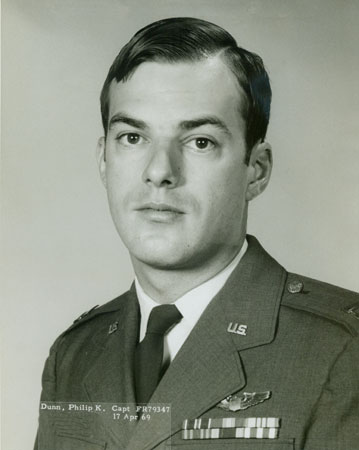
April 1969
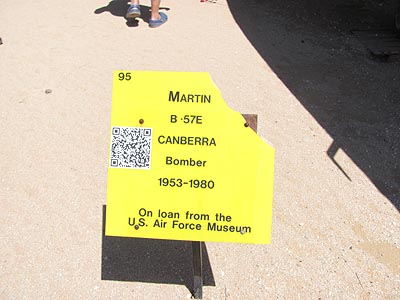
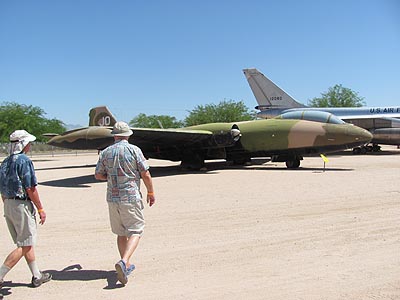



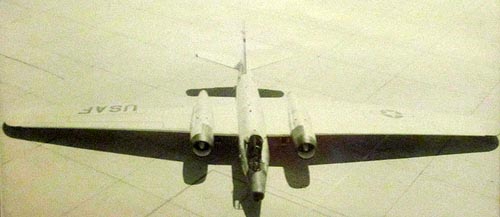
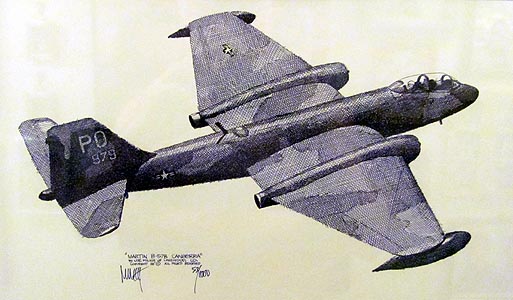
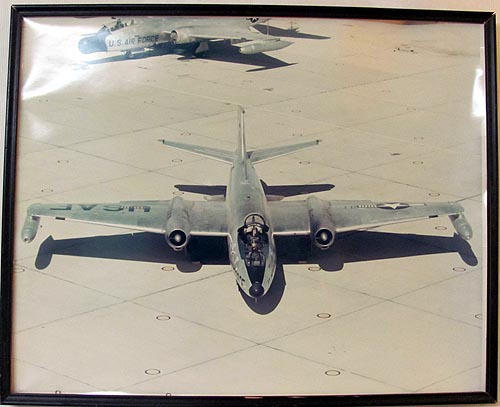
 B57F leaving from Mendoza, Argentina for Panama City. Note the lack of the extra engines under the wing. We sampled air at high altitudes south to Tierra del Fuego and as far north as Arctic ice cap based in Fairbanks I flew from all three, preferring the lovely Mendoza. |
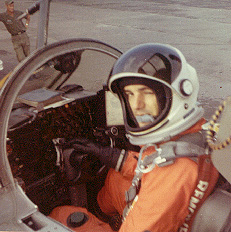 Captain Philip K. Dunn, USAF, about to take off from Pago Pago in a B57F - Full Pressure Suit - up to 70K feet. We flew to sample the radiation from atomic bomb tests that the French and Chinese were conducting (separately) over the Pacific Ocean. Once a detonation was detected, we would launch to sample. We were there for about 6 weeks, 1968. Note the red "Remove before Flight" flag behind my head protecting the ejection handle (black/yellow). Accidently pulling that handle would spoil your day. On my back is a parachute. I sit on a rocket ejection seat. |
 Phil piloting B57F Over Canada - 1968 Pilot in front and Navigator/Technician behind. The rudder is so large because of the huge thrust generated by the TF33 engine (25K lbs) - the same engine which powers the C-141 and similar transports. The engine intake is the black thing behind my head. Yes, it climbed like a scalded eagle. |
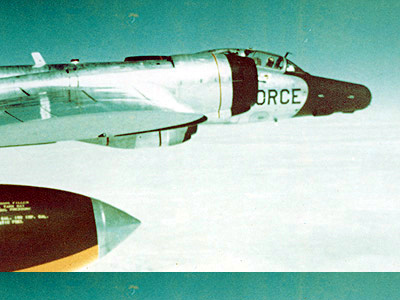 These were taken by a Canadian pilot flying a T-33 on my wing at about 30 thousand feet. Notice that there are 2 smaller engines (J60s) below the TF33s to provide higher altitude. We were working with Canadian scientists testing the atmosphere to see if there was any circulation between the stratosphere and the troposphere. (Yes). This was the only 4 engine airplane in the world with a single pilot station. In fact there were no dual control trainers for the B57F.The instructor could only talk (or yell) at you while he sat in the back. |
USAF B-57C 33857
|
One fine day in 1968, my navigator and later to be brother-in-law Major Ed Hull and I (Capt. Philip K. Dunn b57driver at philandcarol.com) were flying bound for Ramy AFB, Puerto Rico from Albuquerque (Kirtland AFB, PRD's birthplace - son of Philip K.) when during a routine cockpit check I noticed that the hydraulic pressure had fallen to zero (the gauge is near my left knee - 3rd picture). A check of the emergency hydraulic system (a hand pump) revealed that there was no back pressure in that system. This meant that several aircraft systems would no longer operate: landing gear uplock release, landing gear extension, flaps, speed brakes, rudder boost - this airplane was no longer equipped with bombay doors which would have been hydraulic. The basic flight controls (elevator, ailerons, rudder) were mechanical, so basic flight was sustainable - as should have been obvious since we were tooling along at 33,000 feet or so with two good J65 engines. Sunset was approaching as we diverted towards England AFB Louisiana having declared an emergency and discussed our options: bail out or land the airplane on its belly. In just about every retractable gear airplane in the world the landing gear can be lowered by freefall or by some kind of mechanical intervention. This was not a design feature on this airplane - one of the first jet powered airplanes in the world having been designed and built in the early 1950s. It took hydraulic pressure to release the gear door uplock. The hydraulic gauge is above the landing gear handle - which is the one with a white wheel. Just above the T-handle marked PULL. (This handle is for emergency gear extension. I don't recall just what it was supposed to do (blow down bottle?), but obviously it did not help.) The needle is pointing to zero pressure. Click on photo to enlarge. By the way, can you guess what the funnel shaped device to the right of the gear handle is?
There was no way to dump fuel from the airplane. The fuel is carried in the wings and fuselage. So the landing would have to be made with whatever fuel is on board. We could have flown around burning fuel until the airplane was a lot lighter (and thus able to land slower), but by then it would have been dark out and I thought it best to land during daylight hours. You will notice all the pictures are taken at night. But we actually landed the airplane in daylight. Questions, comments? B57Driver@philandcarol.com
|
.jpg)
.jpg)
.jpg)
.jpg)
.jpg)
.jpg)
.jpg)
.jpg)
.jpg)
.jpg)
.jpg)
.jpg)
.jpg)
.jpg)
.jpg)
.jpg)
.jpg)
.jpg)
.jpg)
.jpg)
.jpg)
.jpg)
.jpg)